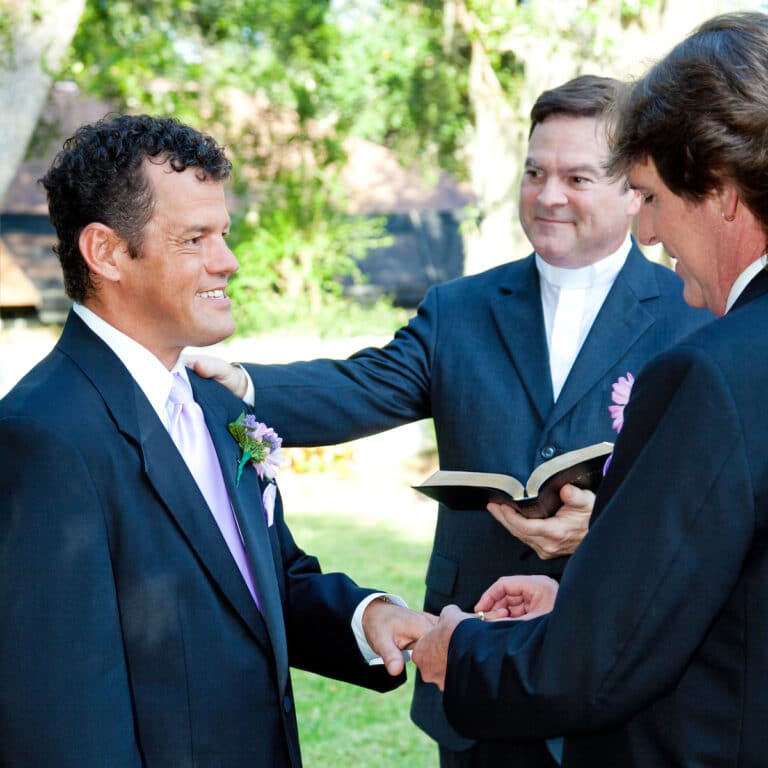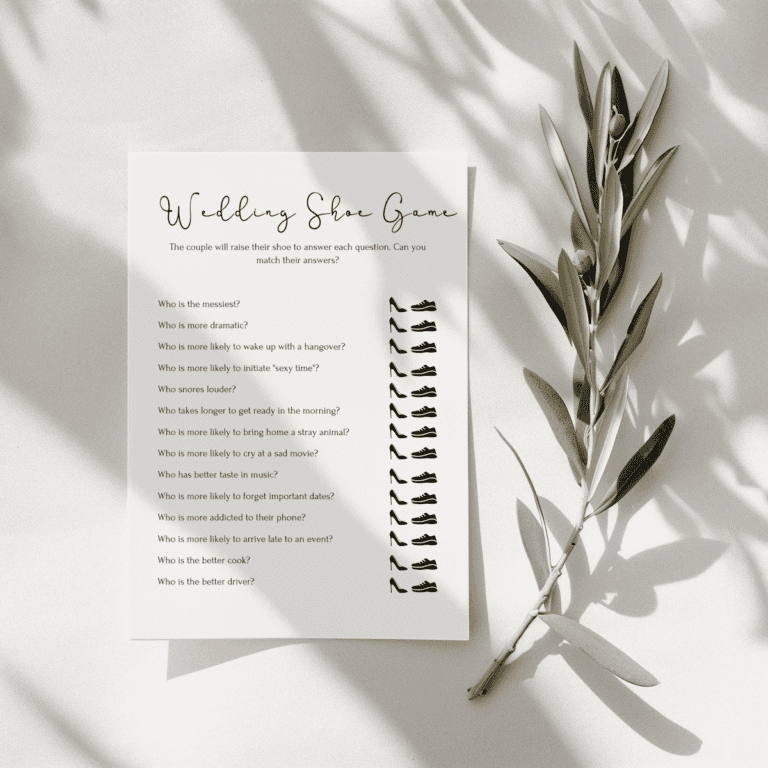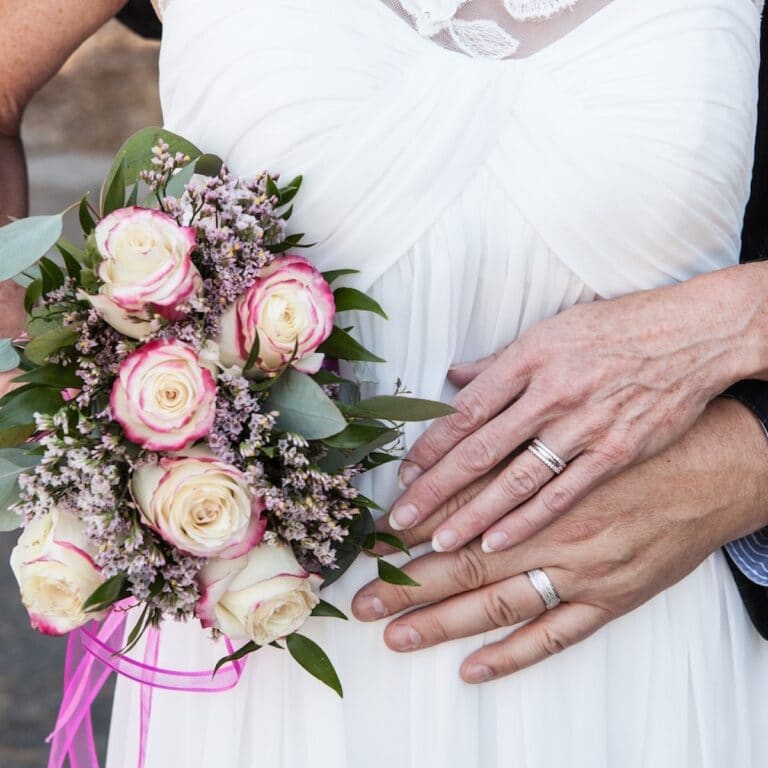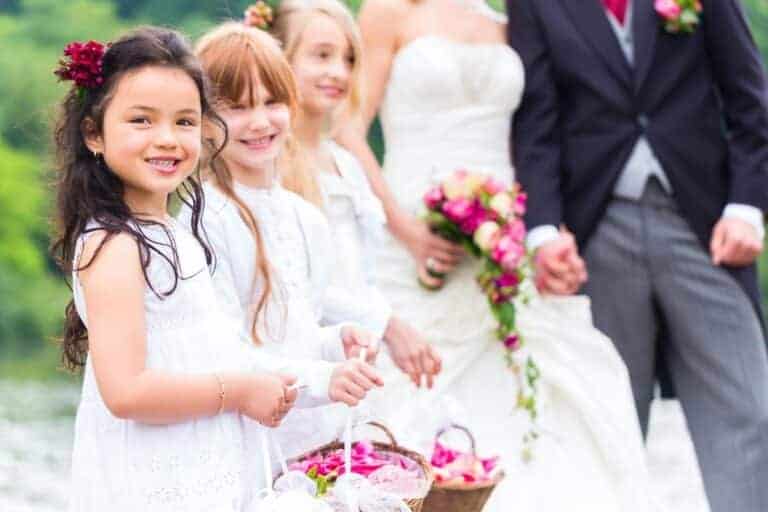Traditional Wedding Ceremony Outline
A wedding day ceremony outline can really be what you want it to be. For the conventional couple, let’s look at a traditional wedding ceremony outline and order.
Having the wedding ceremony order written down is key to keeping your special day running smoothly.
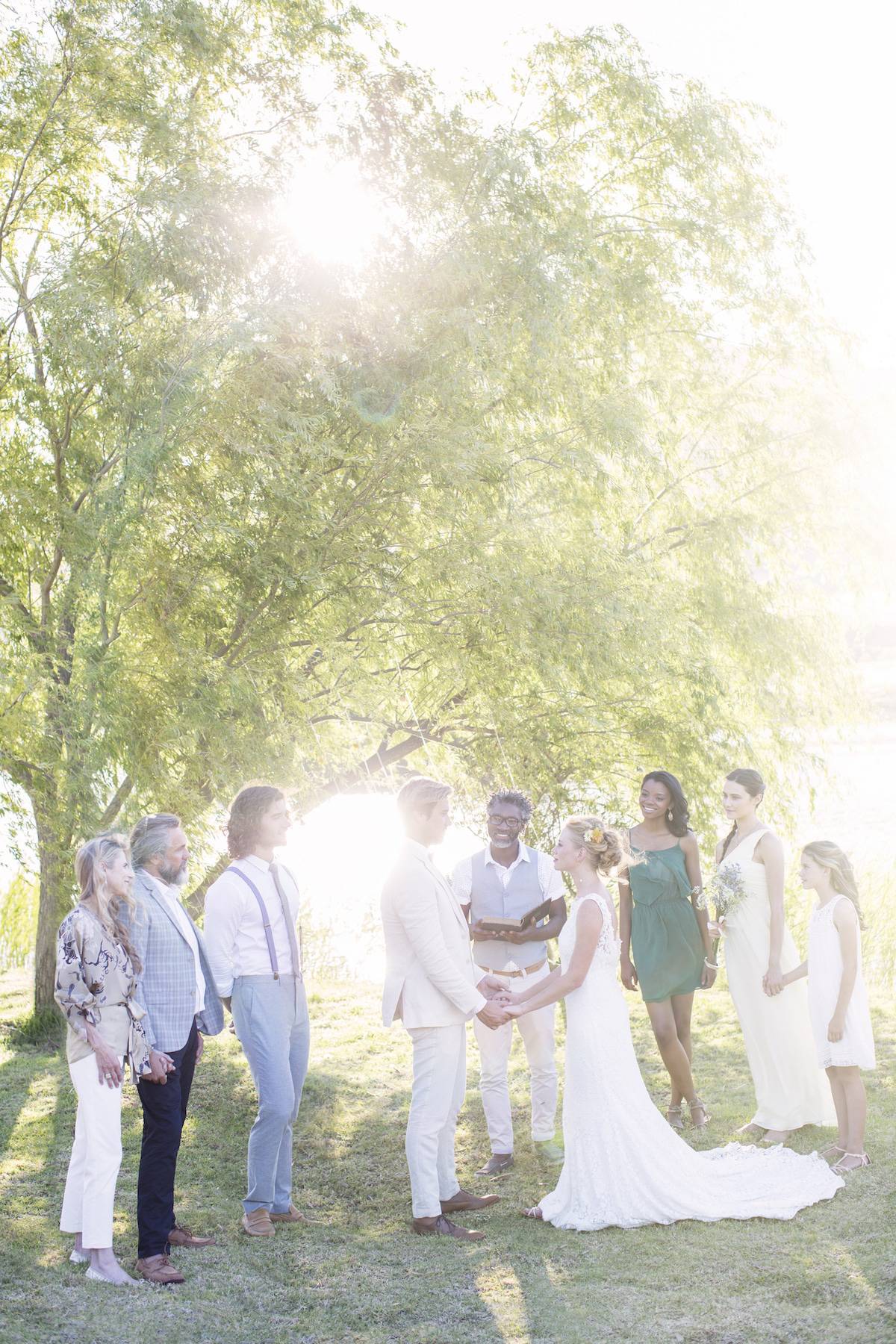
What is the wedding ceremony order?
The order of wedding ceremony events in traditional wedding ceremonies is along the lines of this: An introduction by the officiant, then the exchange of vows and rings, after which the officiant announces the married couple.
This outline is based on traditional Christian weddings. Here are the extra details.
The seating of the guests
First, the guests will be seated. Depending on what was written on the invitation, guests will begin gathering around 30 minutes before the ceremony begins.
If you have ushers at your wedding party, they can escort guests to their seats. This helps to ensure everyone is seated before the processional starts. Traditional immediate family members are seated in the front rows. In a traditional Christian wedding ceremony, the bride’s parents are on the left and the groom’s parents are on the right.
The wedding processional
The processional order can vary, especially with who walks down the aisle first. Here is a general outline, though remember this can be tweaked for your own wedding. The processional music starts first.
- Mother of the Bride. Often the processional is kicked off by the bride’s mother first. She walks down the aisle, accompanied or alone, and takes her seat in the first row. This signals the wedding service is about to start.
- Officiant. Next is the officiant and they make their way to the end of the aisle.
- Groom. The groom now makes his way to the right of the altar.
- Best man and groomsmen. The groom’s wedding party follows the groom, with the best man coming in first before the groomsmen.
- Bridesmaids – The bridesmaids walk down the aisle, one at a time.
- Maid of honor or Matron of honor. The maid of honor is the last of the bridal party to walk down. She helps the bride right before the ceremony with her veil and dress train. She follows after the bridesmaids.
- Ring bearer and flower girl. Traditionally the ring bearer and flower girl walk down the aisle right before the bride does.
- Bride and bride’s father. The processional finishes off with the grand entrance of the bride. She is traditionally escorted down the aisle with the father of the bride. He then ‘gives her away’ to the groom. Traditionally the bride’s father escorts the bride on his left arm.
Changing the order
The professional order or who gives whom away at the wedding will change depending on many factors. Not everyone has the same family structure to follow the traditional order, nor do all modern couples want to follow that tradition, For same-sex couples, there are many ways to change it up to suit you.
You could walk down the aisle with your partner together or walk down the aisle one at a time, each of you supported by your parents
Officiant’s welcome and opening remarks
At the beginning of the ceremony, the wedding officiant says a few words of welcome to the guests and introduces the happy couple. This is often through recounting the couple’s story. Perhaps how you and your partner met, or a funny and sweet love story of you and your partner.
They may talk about what the wedding ceremony means, the importance of marriage and commitment, and any values the couple shares.
Readings, sand ceremonies, or unity rituals.
Next to take place are any readings, a unity ceremony, and or other ceremonial events such as a sand ceremony or unity candle lighting.
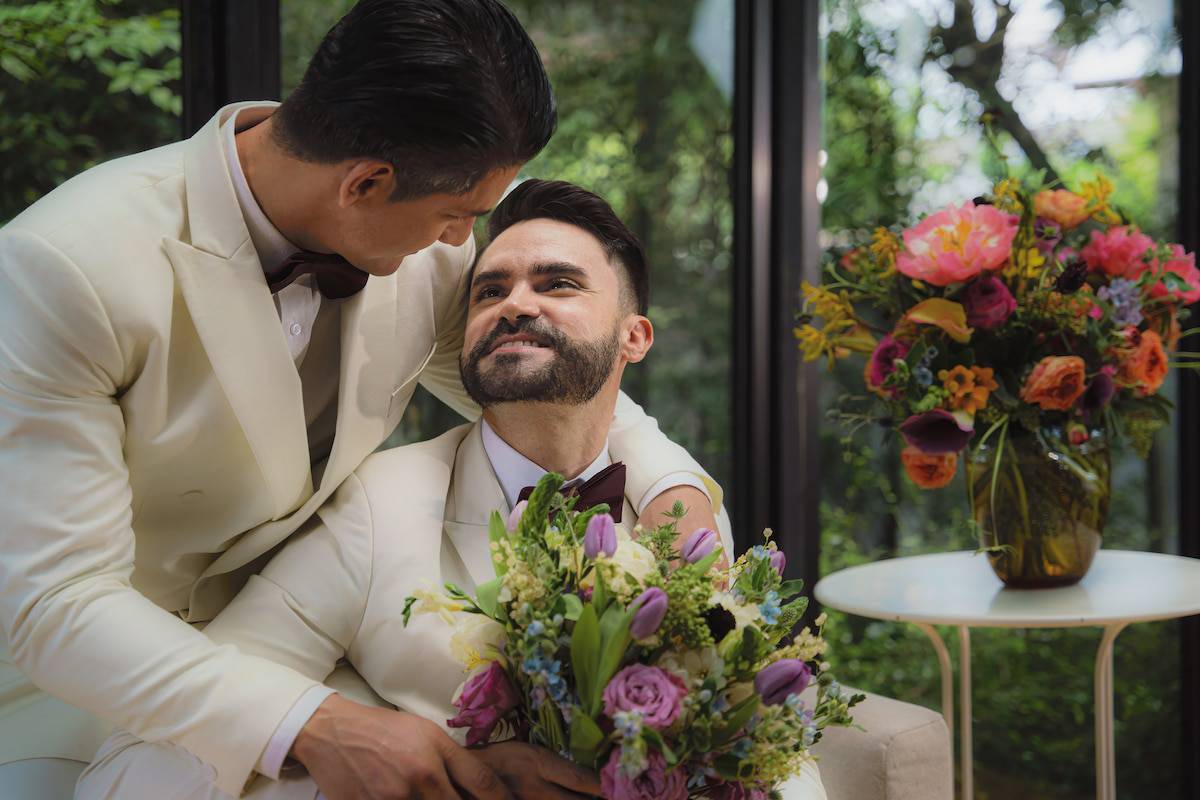
Exchange of vows
Now the officiant addresses you and your partner and talks about the importance of the wedding vows you are about to make. Then it is time to exchange your vows. This is an intimate time in the ceremony, especially if you have written your own vows.
Exchange of rings
After the vows, it is time for the ring exchange. You will each place the wedding rings on each other’s left ring finger. This symbolizes your marriage. Traditionally the groom will place the bride’s ring first.
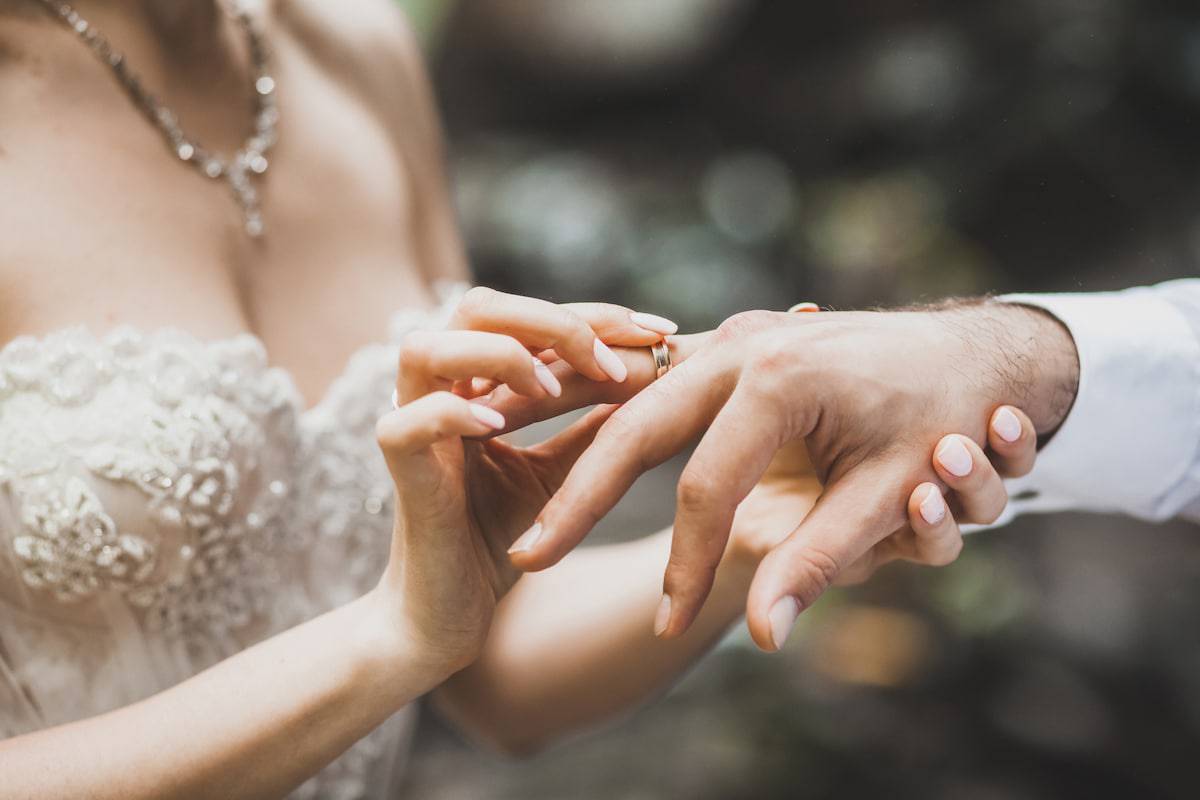
The first kiss
After the exchange of the rings and vows, a kiss seals your marriage! The officiant will officially pronounce you as a married couple, and you may kiss.
The signing of the marriage register/license
After the kiss, you and your spouse and witnesses will sign the marriage license, which legally ensures you are married.
The declaration of marriage
The officiant wraps up the ceremony with a few last words and introduces you and your spouse to the guests. This is your first introduction as an official married couple and the start of your married life. Together you and your spouse make your way down the aisle.
The recessional
After the married couple, the wedding party and parents of the bride and groom walk back down the aisle in the reverse order they came in.
How long is a wedding ceremony?
The average length of a wedding ceremony is around 20-30 minutes.

